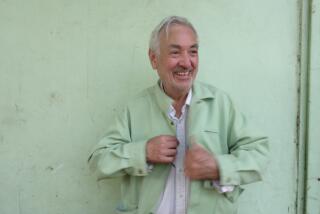Looking back at Charles and Ray Eames
It’s kind of amazing when you think about it, all the things Charles and Ray Eames did. Known for work as diverse as the Eames chair and the short film “Powers of Ten,” they were architects, artists and designers of everything from graphics to toys to textiles, operating out of the Eames Office in Venice, as well as the Case Study house they built in Pacific Palisades in 1949. Their creations are marked by a unique mix of utility and play; “Take your pleasure seriously,” Charles observed.
The Eameses have never been underappreciated; they were celebrated most recently by LACMA’s Pacific Standard Time exhibit on California Design, which featured, among other things, a recreation of their iconic living room. But they’ve never been represented by a coffee table book, until the publication this month of “Eames: Beautiful Details” (408 pp., slipcased, $200), an oversized, boxed retrospective published by Santa Barbara’s AMMO Books.
“Beautiful Details” offers something of a comprehensive overview, with chapters on all of their various disciplines. But more than that, it is a personal document, edited by their grandson, Eames Demetrios — who is chairman of the Eames Foundation — and featuring family photos, documents, reminiscences.
This, of course, is as it should be, for at the heart of the Eames project was a sense of love, of family. Their collaboration, which began in 1941 when they got married, ended only with Charles’ death in 1978. For all those years, they worked together, lived together, played together — a bond illustrated here by an array of photos capturing them together, which highlight their affection and their intimacy.
It’s as if, for the Eameses, marriage, the family, was incubator of their creativity, which is itself a stirring lesson in how to live. This reminds me of another mid-century Southern California artist, Wallace Berman, who in the 1950s articulated a vision of bohemia that was essentially domestic, in which the family became the most essential revolutionary unit, and the barrier between work and family life was effectively erased.
Now, of course, we live at a time when these boundaries are eclipsed in a different way. In our age of constant contact, it’s almost impossible to step away from the workplace even when we’re off the clock. And yet, if the Eameses have anything to tell us, it’s that we can — must — aspire to a higher integration, in which work should not only feed our stomach but also, and more importantly, our souls.
This is the lesson of “Eames: Beautiful Details,” which, in the end, is about how to construct a meaningful life. All it requires is that we pay attention. Or, as Charles once put it: “We start gradually, as in a love affair.”
ALSO:
Edith Pearlman wins the Ribalow Prize
Decision on Los Angeles’ first poet laureate nears
David Ulin and Carolyn Kellogg discuss literary adaptations [video]
More to Read
Sign up for our Book Club newsletter
Get the latest news, events and more from the Los Angeles Times Book Club, and help us get L.A. reading and talking.
You may occasionally receive promotional content from the Los Angeles Times.








